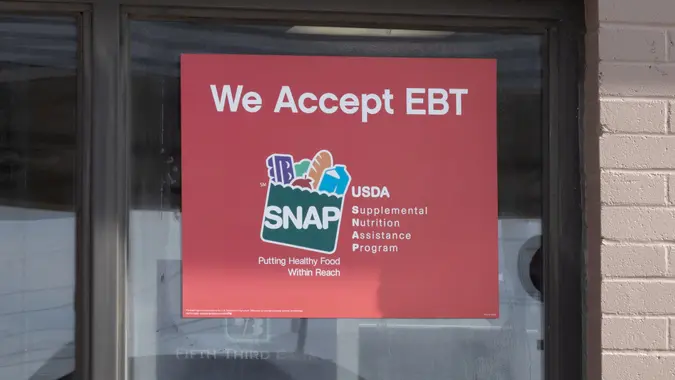How Did the Poorest States Get To Be So Poor?

Commitment to Our Readers
GOBankingRates' editorial team is committed to bringing you unbiased reviews and information. We use data-driven methodologies to evaluate financial products and services - our reviews and ratings are not influenced by advertisers. You can read more about our editorial guidelines and our products and services review methodology.

20 Years
Helping You Live Richer

Reviewed
by Experts

Trusted by
Millions of Readers
According to the U.S. Census Bureau, in 2022, Mississippi, West Virginia, Arkansas, Alabama, New Mexico, Oklahoma, and Louisiana had the highest poverty rates in the U.S. at over 15% each.
Discover Next: Owe Money to the IRS? Most People Don’t Realize They Should Do This One Thing
However, understanding how these states became so poor requires an examination of their histories and the structural challenges they face. Let’s look at some factors contributing to these high poverty levels.
Economic Structure
The economies of these states have historically been less diverse and relied heavily on single industries. For example, a Mississippi Department of Agriculture study stated, “Agriculture is Mississippi’s number one industry, employing approximately 17.4% of the state’s workforce either directly or indirectly. Agriculture in Mississippi is an 8.76 billion-dollar industry.”
When the agricultural sector is suffering due to declining commodity prices, international competition and other factors, these states acutely feel the impact. Industries in these states often also provide low-wage jobs, contributing to the persistent poverty.
Historical Context
Many of the poorest states are located in the South and have histories deeply intertwined with slavery and plantation economies. Post-Civil War, the South struggled to transition to an industrial economy, unlike the North which experienced rapid industrialization. Compared to the North, Southern states kept taxation and government spending at lower levels, which resulted in less development over time.
The economic model of the South remained heavily agrarian, dependent on low-wage labor and slow to adopt technological advancements.
Education and Workforce Development
Educational achievement in these states has historically lagged behind national averages. For example, Arkansas has one of the most undereducated populations in the nation when considering the percentage of adults with college degrees. Poorer states often invest less in education due to limited tax revenues, creating a cycle of underfunded schools, lower educational outcomes and a less skilled workforce.
The state of Arkansas explained that the COVID-19 pandemic worsened an already struggling school system, and students are now struggling to recover from earlier learning disruptions. Although non-profits like Forward Arkansas are committed to growing the state’s education system, just like other poorer states, the historical lack of investment continues to hamper economic growth and limits residents’ opportunities to break out of poverty.
Infrastructure and Investment
Investment in infrastructure is another critical factor. Poorer states often have less developed infrastructure, which can deter business investment. Poor roads, limited public transportation and inadequate broadband access make it difficult for businesses to operate efficiently and for residents to access opportunities.
Conclusion
The poverty of the poorest states in the U.S. is not the result of a single factor but rather a blend of history, economic structures, social inequities, and political decisions. Addressing this complex issue requires comprehensive strategies that include investing in education, healthcare, and infrastructure; promoting economic diversification; and implementing policies that address racial and social inequities.
More From GOBankingRates
 Written by
Written by  Edited by
Edited by 

























